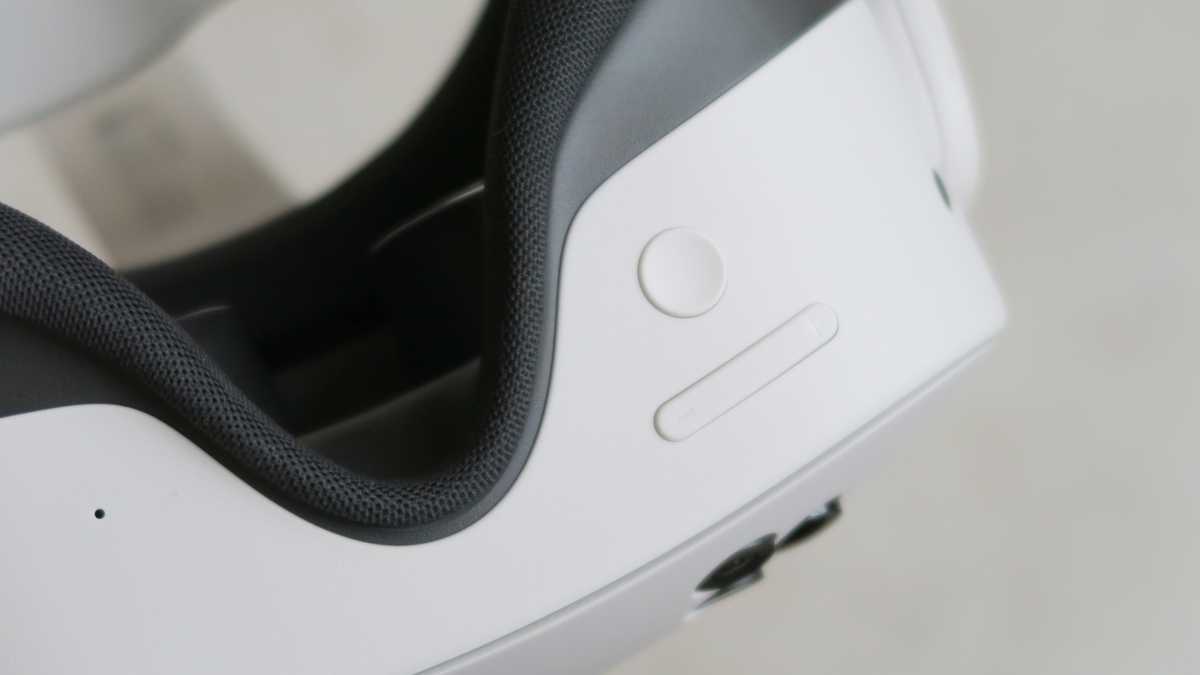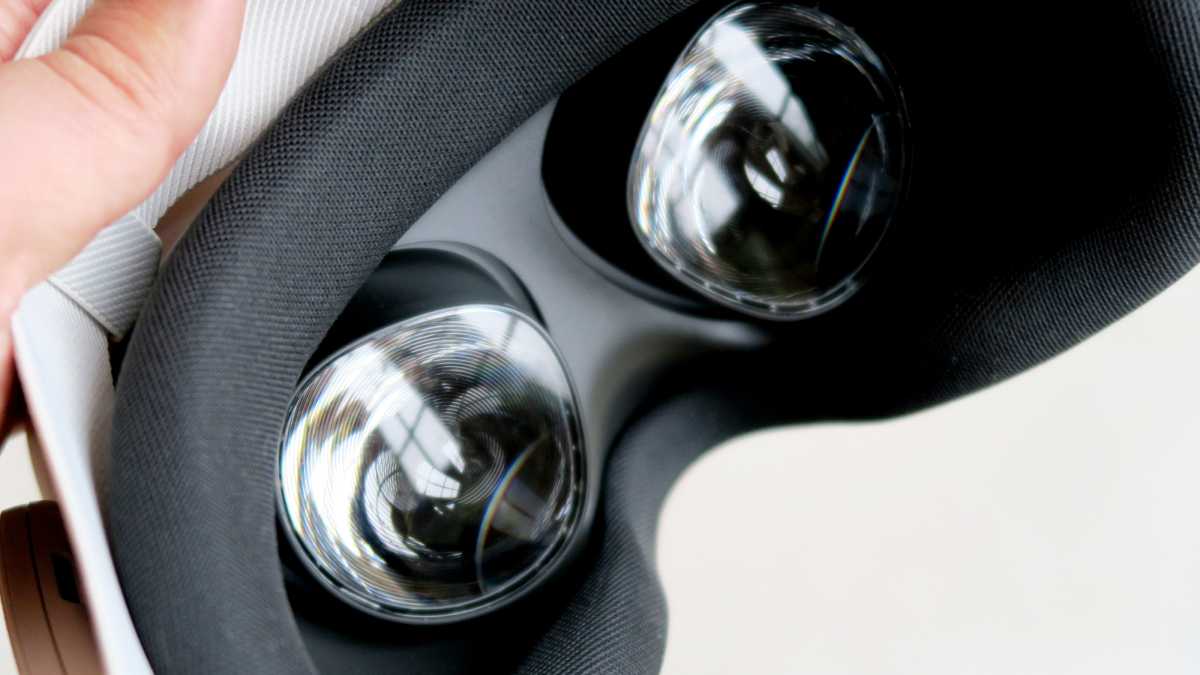While the Meta Quest 3 might be the go-to VR and MR headset for most buyers right now, with a starting price of £469.99/$499.99 there’s no denying that it’s a pricey piece of kit. To remedy this, Meta just introduced the Meta Quest 3S, which makes some considered compromises to offer a current-gen experience with a significantly smaller price tag.
The most obvious difference is the Quest 3S’ revised optical stack, which helps knock around £200/$200 off the Quest 3’s current asking price, while still aiming to deliver a comparable user experience, in terms of software and hardware performance.
Just how well does Meta’s latest headset realise this intent? Let’s compare Quest 3S and Quest 3 to find out which is best for you.
Design & Build
To help separate the Quest series from the Rift line of headsets that preceded it, Meta switched from black to a light grey plastic finish on the Quest 2, which has persisted with the Quest 3, and now the Quest 3S.
Beyond obvious dimensional differences (which we’ll get onto in a bit), the Quest 3S boasts cleaner aesthetics, with two small clusters of cameras and sensors on the front, in place of the Quest 3’s more utilitarian triple pill-shaped camera and sensor array.
You’ll find physical volume controls underneath, capacitive touch controls on the side, and integrated speakers, alongside a pre-installed fabric head strap and facial interface. Thankfully, the selection of additional head straps Meta sells – namely the Elite Strap and the ‘Elite Strap with battery’ should fit both systems, alternative facial interfaces, however, don’t.
Foundry | Alex Walker-Todd
Despite its thinner and more rounded profile, the Quest 3 only clocks in at a gram lighter than the newer Quest 3S, and weight distribution is similar too. Both are front-heavy headsets out of the box (with the centre of gravity being slightly further forward on the 3S), but otherwise, they offer a very similar feel and comfort level on your face.
One nice tweak that the 3S lords over the 3 is the addition of a dedicated Action button on its underside, which by way of a quick press, replaces any VR or MR elements with a clean pass-through camera feed of your surroundings.
It’s a notable improvement on the side touch-panel double-tap (that both headsets still support), which long-time Quest 3 owners have repeatedly called out for being unreliable.
This Quest 3S-only convenience is balanced out by the fact only the Quest 3 boasts a physical 3.5mm headphone jack; you’re limited to the integrated speakers or Bluetooth audio with the 3S.
Screen & Lenses
The Quest 3S’ notable price difference is driven primarily by the switch back to a near-identical optical stack to that of the previous Quest 2, which is also the reason for the newer headset’s additional thickness, compared to the Quest 3.
Where the Quest 3 boasts a dual LCD setup, delivering a resolution of 2064×2208 per-eye and 25 pixels per degree (PPD), the 3S reverts back to a single LCD panel, which provides 1832×1920 per eye, with 20 pixels per degree.
Brightness and refresh rate (up to 120Hz) is comparable across both, with the lens setup being the other obvious differentiator.
Pancake lenses are pricey, but they grant the Meta Quest 3 a significantly larger visual sweet spot, that’s easier to find when adjusting the headset on your head; allowing for more comfortable wear in the long run. This is also helped by the larger FoV (field of view) and the wider IPD (inter-pupillary distance) range, which is manually adjustable anywhere between 58mm and 71mm, using the dial on the underside of the Quest 3.
Not only do the fresnel lenses need a lot more space to fit inside the Quest 3S’ chassis (about 40% more), but they also come with a slightly narrower FoV (up to 97° horizontally and 93° vertically, versus 110° horizontally and 96° vertically on the Quest 3), as well as a shorter IPD range (58mm to 68mm), that you can only adjust in three increments, by manually pushing or pulling the lenses closer together or further apart.
High-contrast visuals are the easiest way to highlight how light is affected passing through each lens type, with more distortion, bloom and chromatic aberration towards the edges of the fresnel-based optics inside Meta’s newest headset.
All in all, this means clarity and immersion are collectively weaker on the 3S, which goes to show exactly where the extra money afforded to the standard Quest 3’s asking price goes.
Performance & Storage
Thankfully, for as different as the viewing experience between the Quest 3 and 3S is, Meta has made sure that performance across both systems is as close to identical as possible.
Both headsets pack 8GB of RAM and run on Qualcomm’s latest Snapdragon XR2 Gen 2 chipset; a notable improvement over the Quest 2’s XR2 Gen 1 SoC. On paper it delivers 2.5x better graphical performance, and is currently the silicon of choice for standalone VR, serving up reliably smooth visuals and facilitating more demanding effects, like dynamic lighting and particles, when gaming.
If the Quest 3 is already the benchmark for standalone VR, performance-wise the Quest 3S is just as capable, with the same level of smoothness and fidelity on offer, and adequate resources to hold minimized apps in the background and multitask.

Batman: Arkham Shadow
Foundry | Alex Walker-Todd
At launch, the Quest 3 arrived in 128- and 512GB storage configurations, however, the Quest 3S’ arrival a little over a year on heralded a shift in the storage options across the entire lineup.
The Quest 3S comes in 128- and 256GB flavours, while the Quest 3 now comes in a sole 512GB model (now that stock of the 128GB Quest 3 has been exhausted).
Meta did at least knock a decent chunk off the price of the top-spec Quest 3 at the same time though (£150, in the UK). For reference, 128GB is enough for up to about 30 standalone games – according to Meta, while 20 experiences occupied 100GB of storage in the units used in this feature.
Cameras
One huge improvement made between the Quest 2 and Quest 3 was the upgrade given to the headset’s pass-through cameras.
While both generations supported stereoscopic pass-through, the improved resolution and the shift to RGB (rather than monochrome) sensors granted the Quest 3 legitimate viability as a mixed reality system.
The Quest 3S boasts a similar sensor array on its front, allowing for full-colour pass-through at a resolution of 4Mp and the same degree of support and fidelity for mixed reality experiences as on the Quest 3.

Foundry | Alex Walker-Todd
The ToF (time-of-flight)/IR sensors on the fronts of both headsets also allow for quick and painless room scale setup; scanning your environment and ‘remembering’ where the boundaries are, making both systems significantly more convenient to use than the Quest 2, in this regards.
Battery Life & Charging
The Quest 3 houses a 4879mAh battery that’s rated for up to 2.2 hours of use per charge, while the Quest 3S features a smaller 4324mAh battery.
Despite this lesser capacity, however, Meta’s latest headset actually runs for longer, at up to 2.5 hours on a charge; that’s the idea, at least. In my tests, both headsets lasted an identical amount of time, a sliver over two hours on a charge, based on mixed usage.
About 50% of a single charge was spent on VR gaming, 20% on mixed reality and 30% on immersive video. So while the Quest 3S should last longer, there’s little in it in real life, depending on the experiences you dive into.

Foundry | Alex Walker-Todd
Both headsets come with an 18W power adapter in-box, which Meta claims refills the Quest 3 in about 1.75 hours, while the Quest 3S is meant to clock in at around 1.6 hours. Again, testing reveals that charging is a little slower than promised, with the Quest 3 taking exactly 2 hours to recharge, while the Quest 3S was only 5 minutes faster.
The caveat to these figures is that it takes a long time to reach that final percentage, while the majority of both headsets’ batteries are topped up far sooner. After 90 minutes, the Quest 3’s battery sat at 93%, while the Quest 3S’s had reached 95%.
One other small hardware difference that affects power management is the absence of the Quest 3’s proximity sensor on the Quest 3S. Likely driven by both cost and a designed issue with the proximity sensor on the Quest 2 that allowed moisture to get behind the optics and cause a short, the lack of this sensor means that you have to manually tap the power button when taking the 3S off to put the system to sleep.
If you forget, it’ll remain fully powered up for a while longer, sapping precious battery life in the process. The Quest 3 doesn’t suffer from this issue, as the moment the sensor detects that you’ve removed the headset, it powers down the displays and initiates sleep mode all by itself.
Software & Apps
The compromises Meta chose to exact on the Quest 3S mean that it isn’t any less capable than the Quest 3 at running standalone games.
As such, you have full access to the 600-odd games and nearly 3,000 total apps on the Meta Horizon store, across both headsets.
The 3 and 3S are also compatible with the Meta Quest Link Cable for wired PC VR experiences, as well as a wireless alternative: Air Link, and since the Quest 3’s launch Steam Link can now run natively on both of Meta’s headsets, with included support for hand tracking to boot.
Price & Availability
The Meta Quest 3 launched in 2023 and is now available direct from Meta in a single 512GB configuration for £469.99/$499.99, while the Meta Quest 3S went on sale October 15 2024, priced at £289.99/$299.99 for the 128GB model and £379.99/$399.99 for the 256GB variant.
At the time of writing, a new purchase of either headset also includes Batman: Arkham Shadow.
Third-party retailers may still have stock of the 128GB Meta Quest 3, if you’re looking for Meta’s best, without having to pay top dollar.
There aren’t really any secrets as to why the Meta Quest 3S is the more affordable headset here, aside from the odd advantage – the dedicated Action button, to quickly access pass-through and marginally longer battery life – it resorts to a lesser optical stack, while otherwise delivering the same performance as the standard Meta Quest 3.
The Quest 3 is the more compact system, with more forgiving lenses, more storage and the convenience of wired audio, but you pay at least £90 / $100 more.
For most people, the cheaper Meta Quest 3S will be the better value VR headset purchase.
See also: Samsung confirms Galaxy S25, XR headsets and cheaper foldables for 2025.
Read the full article here


















